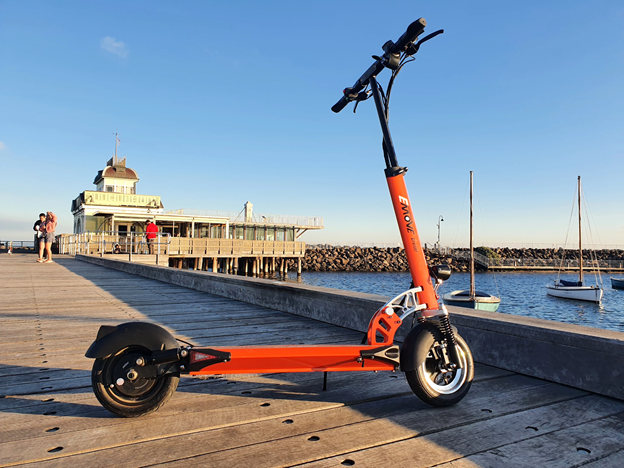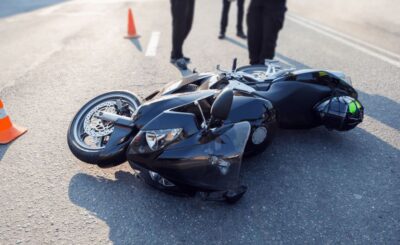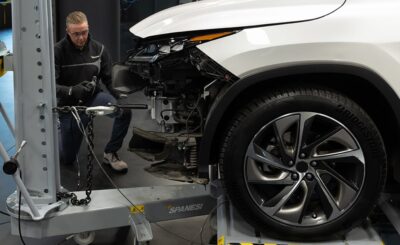Electric scooters are an increasingly popular, eco-friendly way to travel short to medium distances. Compared to traditional vehicles like cars or motorcycles, electric scooters offer a convenient, fun, and affordable commuting option. They allow you to move more quickly than walking or cycling, without the physical exertion of a bike ride—helping you arrive refreshed for work, school, or recreation.
This detailed guide to choosing an electric scooter outlines key features and specifications to help you select the right model. Beyond price, important factors include design, speed, motor power, weight, and range. Understanding these features will help you find high-quality electric scooters suited to your lifestyle and daily travel needs.
1. E-scooter design
When selecting an electric scooter, look for a design that fits your personal style and physical requirements. While bright, colorful scooters may appeal to younger riders, adults often prefer models with neutral tones. However, design encompasses more than appearance—it also involves construction quality and ease of maintenance, which directly influence ride comfort and long-term durability.
Key design features to evaluate include wheel size, tire type, suspension, and braking system. Understanding these components will help you assess ride performance and suitability for different environments.
Wheel size
Scooters with large wheels—typically 10 inches or more—offer better traction and stability. Many also include hub motors for additional power. Smaller wheels (between 5 and 8 inches) are lighter but less stable on uneven surfaces.
Tire type
E-scooters use either solid (airless) or pneumatic (air-filled) tires. Pneumatic tires provide smoother rides and better shock absorption but need occasional maintenance, such as pressure checks and tread inspections. Solid tires are maintenance-free and maintain consistent performance, which can be beneficial for long-range travel. The choice often depends on whether your scooter has a suspension system, as air-filled tires help absorb shock in models without suspension.
Suspension
There are three main types of e-scooter suspension systems: spring, rubber, and hydraulic or air piston. For maximum comfort on longer rides, consider models that combine spring and hydraulic or air piston suspension systems.
Brakes
Braking is a critical safety feature. The most common types are foot, drum, disc, and electric brakes. Disc brakes offer the strongest stopping power, while electric brakes require little to no maintenance and can contribute to battery efficiency through regenerative braking.
Other safety features
Additional safety features to look for include front and rear lights for nighttime visibility and an ingress protection (IP) rating. The IP rating indicates resistance to dust and water. It consists of two digits: the first for dust protection, the second for water resistance. An “X” in either position means no data is available for that category. Always check the IP rating if you plan to ride in wet or dusty environments.
2. Top speed
Speed is an important factor, especially if you’ll be using your scooter for commuting. The top speed reflects how fast the scooter can go under optimal conditions. Most electric scooters fall within the 20 to 30 mph range, but actual speed may vary based on rider weight, terrain, tire type, and suspension.
Consider your daily routes. If you regularly ride uphill or through areas with changing speed zones, a scooter with higher top speed and better power may be beneficial. However, you may not need the fastest available model. Choose one that’s quick enough for your needs but still legal in your local bike lanes or paths. Regardless of speed, always wear appropriate safety gear when riding.
3. Motor power
Motor power directly impacts performance. Most electric scooters are equipped with brushless DC motors, which may be located in one or both wheels. Scooters with two motors are generally more powerful and quicker.
Motor power is measured in watts. A 250-watt motor is adequate for flat roads and mild inclines. For steeper terrain, consider motors in the 400-500 watt range. If speed and climbing ability are priorities, look into high-performance models with dual motors offering a combined output of 1,000 watts or more.
4. Weight
Both the weight of the scooter itself and its load capacity are crucial considerations. Load capacity refers to the maximum weight the scooter can carry, typically between 220 and 275 pounds. Heavier riders should look for models built to accommodate their weight, as overloading affects performance and battery efficiency.
Scooter weight also affects portability and ride stability. Heavier models provide greater stability and can support more weight but may be harder to maneuver or transport. For city commuters or those who frequently carry their scooter, a foldable, lightweight model may be more practical.
5. Range
Range indicates the maximum distance an electric scooter can travel on a single battery charge. Factors such as rider weight, terrain, average speed, and motor power influence real-world range. Environmental conditions like wind and temperature also play a role.
While manufacturers typically list maximum range under ideal test conditions, actual results may vary. Use the published range as a reference, but plan according to your actual usage and commuting needs to ensure the scooter meets your expectations.
Once you understand what to look for, selecting an electric scooter becomes a straightforward process. Think about your daily needs and environment, and always check local rules and regulations before making a purchase. With the right model, you’ll enjoy a convenient, efficient, and enjoyable way to get around.








